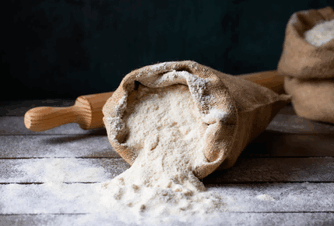 Import News
Import News
 2023-09-11
2023-09-11
Italy, renowned for its rich culinary tradition, is a major exporter of high-quality flour. Importing flour from Italy can be a lucrative business venture or a strategic move for bakeries and restaurants looking to enhance their product quality. In this guide, Tendata will explore the steps and considerations involved in importing flour from Italy.
>>>Online Customer Service Consultation<<<

The Flour Industry in Italy
Before diving into the import process, it's essential to understand Italy's flour industry's key aspects:
· Flour Varieties: Italy produces various types of flour, each suited for specific culinary purposes. These include Tipo 00 for pizza and pasta, Tipo 0 for bread, and whole-grain flours. Understanding these varieties is crucial for importers.
· Quality Standards: Italian flour is known for its high quality and adherence to strict standards. The "Indicazione Geografica Protetta" (IGP) label ensures the origin and quality of the product.
· Producers: Italy is home to numerous renowned flour producers, including Molino Dallagiovanna, Molino Pasini, and Molino Grassi. Choosing the right supplier is essential.
Read Also: How to Import Tiles from Italy?
Steps to Import Flour from Italy
· Market Research: Begin by researching the market demand for Italian flour in your country. Identify potential competitors and target customers.
· Legal Requirements: Familiarize yourself with the import regulations and requirements in your country. This includes customs procedures, import licenses, and food safety standards.
· Supplier Selection: Choose a reputable Italian flour supplier. Look for producers with IGP certifications and a history of quality. Establish a partnership and negotiate terms.
· Quality Control: Ensure that the selected supplier adheres to quality control measures and standards. Request samples and certifications to verify the product's quality.
· Logistics and Shipping: Arrange the logistics for transporting the flour from Italy to your location. Consider factors like shipping methods, storage, and transportation within your country.
· Customs Clearance: Complete the necessary customs documentation and pay import duties and taxes. Compliance with food safety regulations is essential.
· Storage and Distribution: Establish a storage facility that maintains the flour's quality. Plan for distribution to your customers, whether they are wholesalers, retailers, or bakeries.
Read Also: What Does the US Export to Italy?
Challenges and Considerations
Importing flour from Italy comes with its challenges:
· Costs: Importing involves various costs, including shipping, customs duties, and storage. Carefully calculate these expenses to determine the feasibility of your import venture.
· Regulations: Adherence to food safety and labeling regulations is crucial. Non-compliance can lead to product recalls and legal issues.
· Competition: The food industry is competitive. Differentiating your Italian flour from others is essential. Consider marketing strategies and unique selling points.
Trends and Future Prospects
The flour industry is evolving, with emerging trends such as:
· Organic and Specialty Flours: There is a growing demand for organic and specialty flours, including gluten-free and ancient grain flours.
· E-commerce: The rise of e-commerce platforms has made it easier for importers to connect with Italian suppliers.
· Sustainability: Consumers are increasingly interested in the sustainability and environmental impact of food production. Consider sustainable sourcing options.
Conclusion
Importing flour from Italy can be a rewarding endeavor, given Italy's reputation for quality. However, success requires careful planning, adherence to regulations, and an understanding of market dynamics. By following the outlined steps and staying informed about industry trends, you can navigate the import process and contribute to the flourishing culinary landscape in your country.
You may also want to know:
1. Global Import and Export News
2. Keeping up with Global Import Data
3. Real-Time Access to International Export Data
4. Learn How These Import Export News Can Help Your Import Export Business?
- Specific Trade Data to Help You Analyze Where to Go Next.
Category
Leave Message for Demo Request or Questions


 T-info
T-info T-discovery
T-discovery

 My
Tendata
My
Tendata Market Analysis
Market Analysis Customer
Development
Customer
Development Competitor
Monitoring
Competitor
Monitoring Customer Relationship
Customer Relationship





































































































































